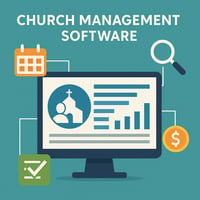Open source software has become a quiet backbone of much of the technology we use every day. From...
Integrating Open Source Software in Churches: Challenges and Solutions

The Hidden Challenges of Open Source Software: What You Need to Know
Open-source software (OSS) has revolutionized the way businesses, churches, and nonprofits build technology. With its promise of cost savings, flexibility, and community-driven innovation, OSS seems like an ideal solution for many. However, as with any technology, it comes with challenges that can impact organizations in unexpected ways. If you’re considering using open-source software for your business or church, it’s essential to understand the potential pitfalls before making a commitment.
1. Lack of Dedicated Support
One of the most significant drawbacks of open-source software is the lack of dedicated support. Unlike commercial software, which typically includes customer service and technical support, OSS relies on community forums, volunteer contributors, or third-party service providers. While some open-source projects have active communities, resolving issues can take longer and require internal expertise. For churches that may not have in-house IT teams, this can be a significant hurdle.
2. Security Vulnerabilities
Security can be a concern when using open-source software. Since the source code is publicly available, malicious actors can analyze it for weaknesses. While open-source communities often respond quickly to threats, businesses and churches using OSS must be proactive about monitoring security updates and applying patches. Failing to do so can expose systems to cyber threats, which is particularly concerning when handling sensitive information such as church member records or donation data. Make sure the software you are using has a policy which insures the security of your data.
3. Compatibility Issues
Many open-source projects are developed independently and may not always integrate seamlessly with existing software stacks. Compatibility challenges can lead to increased development time and costs, especially when adapting OSS to work with proprietary systems. Churches using software for live streaming, donor management, or event coordination should ensure that open-source solutions will integrate smoothly with their existing platforms.
4. Hidden Costs
One of the biggest selling points of open-source software is that it’s free—or at least it appears to be. However, organizations often overlook the hidden costs associated with implementation, customization, maintenance, and security. Training staff, hiring developers to modify the software, and paying for third-party support can add up, sometimes exceeding the cost of proprietary alternatives. For churches and small businesses with limited budgets, these costs can be a dealbreaker. Many open source software solutions are designed with the lay-person in mind and do not require coding experience.
5. Project Abandonment & Longevity Concerns
Not all open-source projects are maintained long-term. Some projects lose momentum, developers move on, or support dwindles over time. If an open-source tool is abandoned, businesses and churches may be left with outdated software and no clear path forward. This makes it essential to evaluate the stability and activity of a project before relying on it for mission-critical operations such as financial management, volunteer coordination, or digital outreach.
6. Legal and Licensing Complexities
Open-source software is governed by a variety of licenses, some of which come with legal obligations that organizations must follow. Certain licenses, like the GNU General Public License (GPL), require businesses and churches to share modifications they make to the software. If licensing terms are not fully understood, organizations risk legal complications that could have been avoided with proprietary software.
Making an Informed Decision
Open-source software can be a powerful tool when used strategically, but it’s not without its risks. Businesses and churches should carefully assess their internal capabilities, security requirements, and long-term sustainability needs before adopting OSS. By understanding these challenges and preparing for them, organizations can maximize the benefits of open source while minimizing potential downsides.
Are you considering open-source software for your church? Check out ChurchApps What concerns do you have? Let’s discuss them in the comments below!



